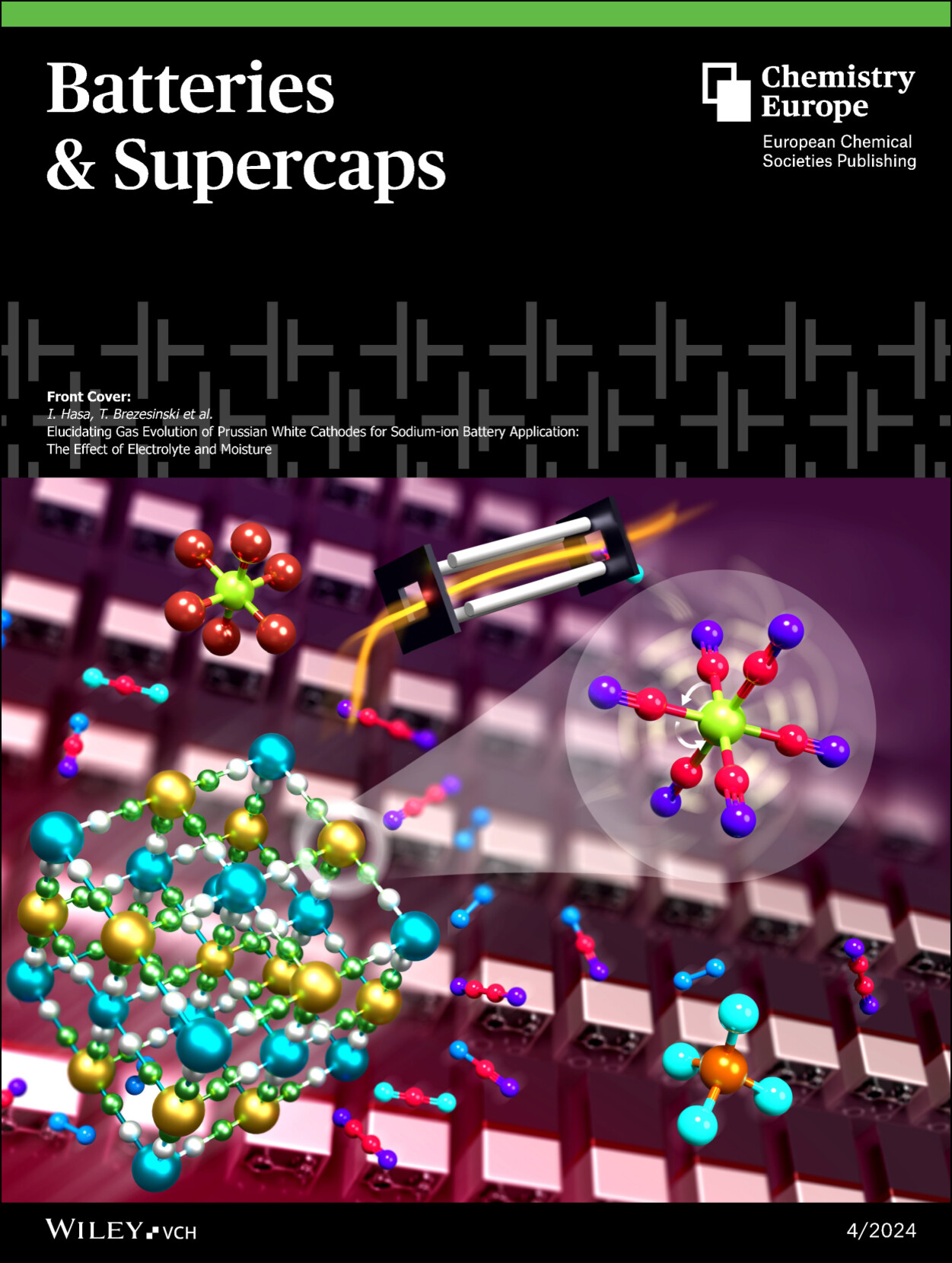All colloidal supercapattery: colloid@carbon cloth electrodes meet "water‐in‐salt" electrolyte
IF 5.1
4区 材料科学
Q2 ELECTROCHEMISTRY
引用次数: 0
Abstract
The pursuit of excellent electrochemical performance, nonflammability and environmental friendliness of aqueous batteries and supercapacitors has driven efforts to find high‐energy yet reliable electrode materials and electrolyte solutions. Here, all colloidal supercapattery are developed using high‐concentration "water‐in‐salt" electrolytes (LiTFSI‐KOH) and pseudocapacitive colloid@carbon cloth as both positive and negative electrodes, which showed merits of batteries and supercapacitors. Ni/Co‐colloid @carbon cloth positive and Fe‐colloid @carbon cloth negative electrodes can be synthesized by in situ electrochemical reaction. The maximum operating voltage of an aqueous colloidal supercapattery is 1.8 V, and the energy density can reach 73.98 Wh kg−1 at a power density of 1799.5 W kg‐1. The specific capacitance of the aqueous colloidal supercapattery still maintains 74.3% of the initial after 2000 cycles of charge/discharge measurement. The combination of quasi ion colloidal materials and "water‐in‐salt" electrolyte pave a profound way to achieve high energy and power ability simultaneously at the supercapattery device.全胶体超级电池:胶体@碳布电极与 "盐包水 "电解质的结合
对水性电池和超级电容器的卓越电化学性能、不可燃性和环保性的追求,推动着人们努力寻找高能量且可靠的电极材料和电解质溶液。在此,利用高浓度 "盐包水 "电解质(LiTFSI-KOH)和伪电容胶体@碳布作为正负极,开发了所有胶体超级电容器,显示了电池和超级电容器的优点。镍/钴胶体@碳布正极和铁胶体@碳布负极可通过原位电化学反应合成。水性胶体超级电容器的最大工作电压为 1.8 V,能量密度可达 73.98 Wh kg-1,功率密度为 1799.5 W kg-1。水性胶体超级电池的比电容在经过 2000 次充放电测量后,仍能保持初始值的 74.3%。准离子胶体材料与 "盐包水 "电解质的结合为超级电池装置同时实现高能量和高功率能力铺平了道路。
本文章由计算机程序翻译,如有差异,请以英文原文为准。
求助全文
约1分钟内获得全文
求助全文
来源期刊

Batteries & Supercaps
Multiple-
CiteScore
8.60
自引率
5.30%
发文量
223
期刊介绍:
Electrochemical energy storage devices play a transformative role in our societies. They have allowed the emergence of portable electronics devices, have triggered the resurgence of electric transportation and constitute key components in smart power grids. Batteries & Supercaps publishes international high-impact experimental and theoretical research on the fundamentals and applications of electrochemical energy storage. We support the scientific community to advance energy efficiency and sustainability.
 求助内容:
求助内容: 应助结果提醒方式:
应助结果提醒方式:


